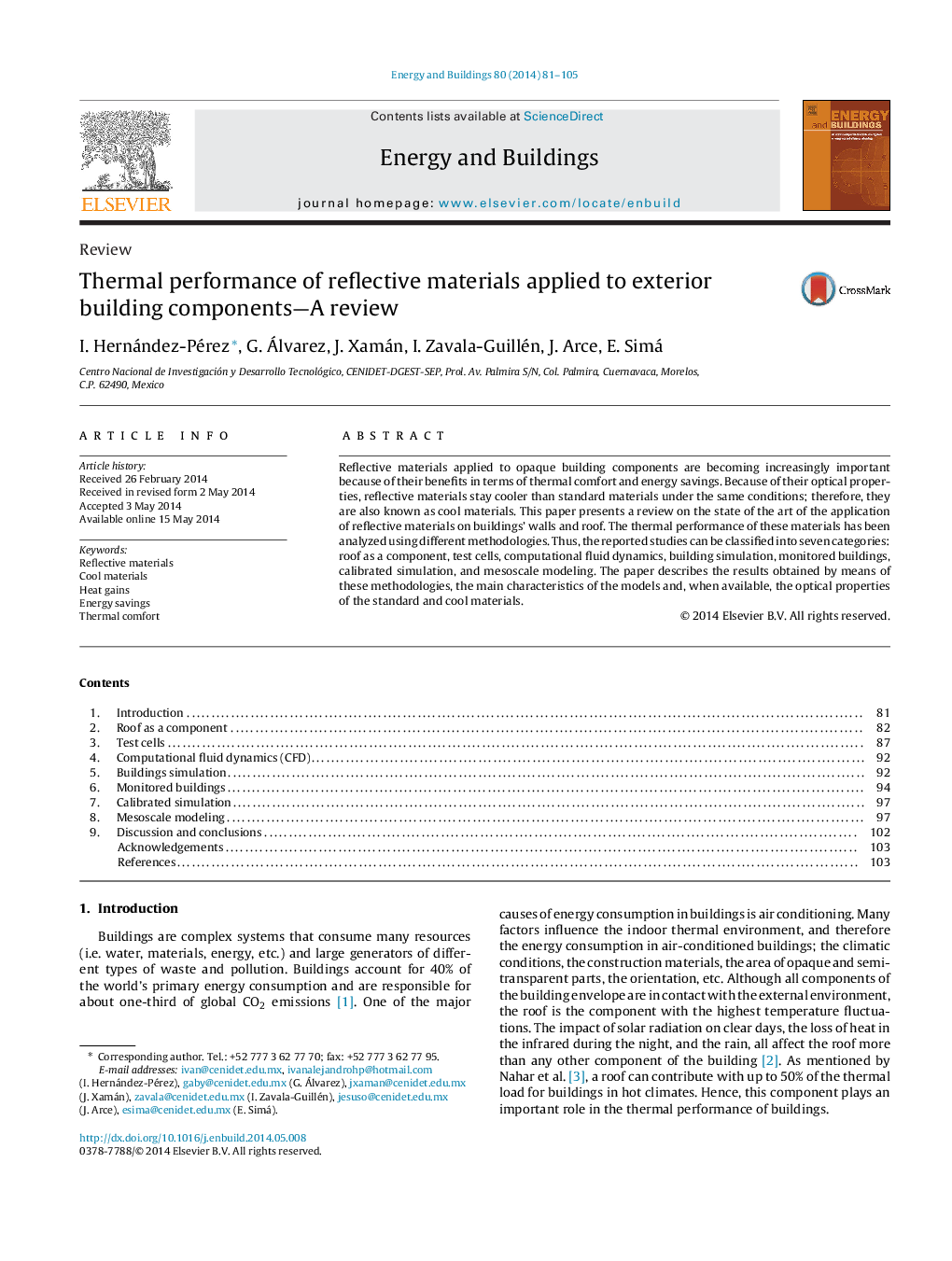| Article ID | Journal | Published Year | Pages | File Type |
|---|---|---|---|---|
| 262748 | Energy and Buildings | 2014 | 25 Pages |
•Reflective materials provide energy savings and thermal comfort in buildings.•A reflective material reduces the roof daily heat gain between 11 and 60%.•A reflective material reduces indoor air temperatures around 1–7 °C.•Reflective roofs decrease daily cooling energy consumption between 1% and 80%.•Considering heating penalties, cool roofs save energy between 1 and 20% annually.
Reflective materials applied to opaque building components are becoming increasingly important because of their benefits in terms of thermal comfort and energy savings. Because of their optical properties, reflective materials stay cooler than standard materials under the same conditions; therefore, they are also known as cool materials. This paper presents a review on the state of the art of the application of reflective materials on buildings’ walls and roof. The thermal performance of these materials has been analyzed using different methodologies. Thus, the reported studies can be classified into seven categories: roof as a component, test cells, computational fluid dynamics, building simulation, monitored buildings, calibrated simulation, and mesoscale modeling. The paper describes the results obtained by means of these methodologies, the main characteristics of the models and, when available, the optical properties of the standard and cool materials.
